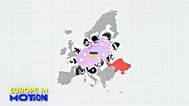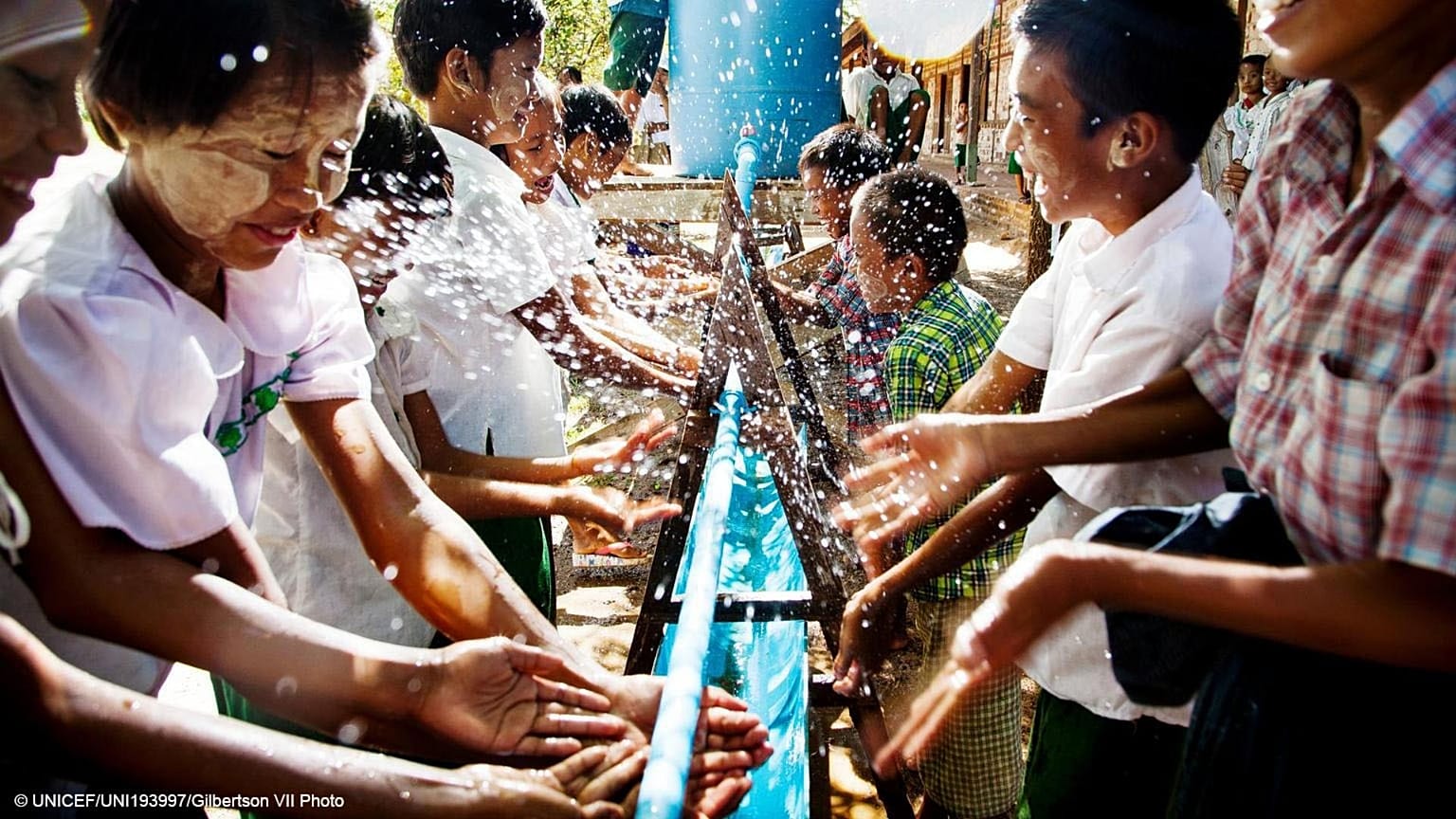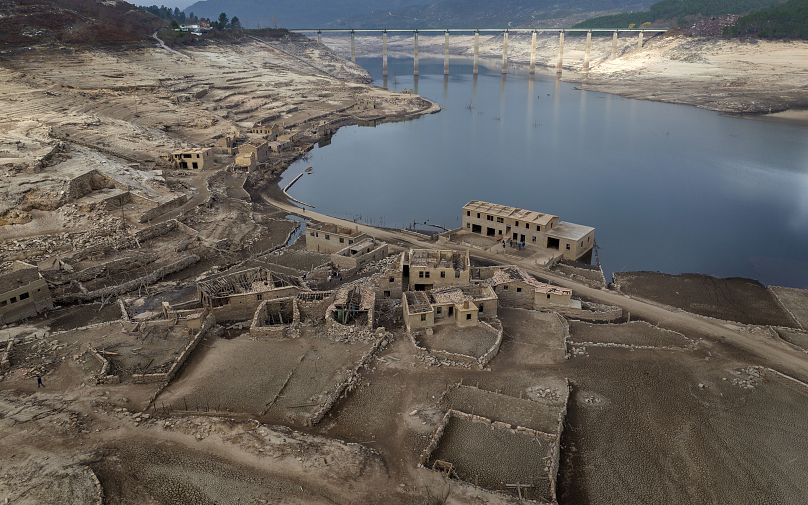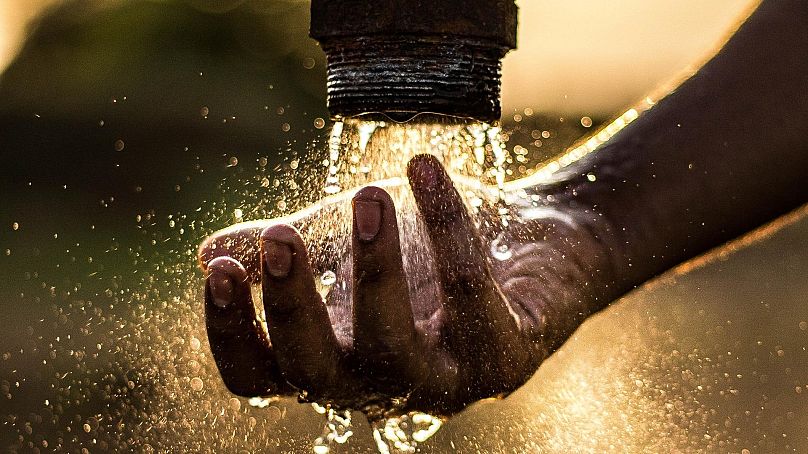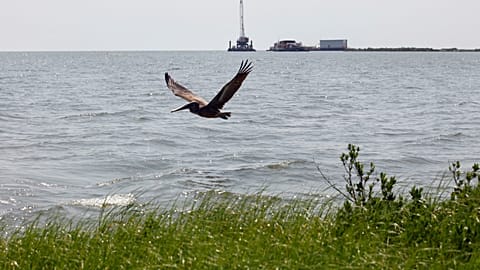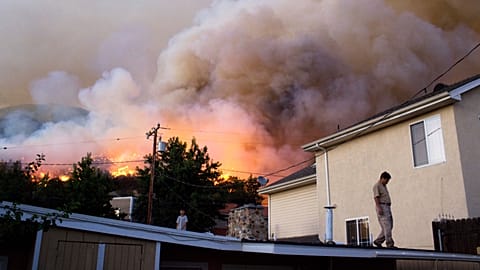Catarina de Albuquerque, CEO of the global partnership Sanitation and Water for All, explores whether water should be free.
Catarina de Albuquerque is the CEO of Sanitation and Water for All and increased political will in favour of water, sanitation and hygiene. She was previously the first UN Special Rapporteur on the human right to safe drinking water and sanitation. Here she shares her thoughts on whether water should be free.
For many Europeans, turning on the tap this summer will come with an added layer of responsibility.
Climate change has wrought severe consequences across the region, including the worst drought in 250 years, resulting in annual losses of €9 billion across the European Union and the United Kingdom.
Ahead of the summer season, countries are already declaring various states of emergency. In France, 15 departments are on drought warnings or alerts and this is Spain’s driest hydrological year of the decade.
In Italy, the lack of rainfall in the Po River Valley has threatened over half of the country’s livestock and one-third of agricultural production.
Recent reports by UNECE and the WHO Office for Europe estimate that 35 per cent of the European Union will be under high water stress within the next 50 years.
The climate crisis will only continue to compound the challenges of upholding the human rights to water and sanitation in Europe. Currently, more than 16 million people in the region still lack access to basic drinking water and more than 31 million people lack basic sanitation. Water scarcity is putting us even further from our goals.
However, water for human consumption represents less than 12 per cent of total water usage in Europe – about 40 per cent is used for agriculture and the remaining for industry, including tourism, mining and energy. Independently of usage, putting a price on water is key to ensuring that everyone, everywhere has access to this resource.
When it comes to personal uses, the UN’s recognition of the human rights to water and sanitation means that member states have a legal obligation to ensure universal access to safe drinking water and sanitation. Access means that every individual or household must be able to enjoy these human rights, regardless of their ability to pay.
Obtaining water should not force low-income households to give up other essential needs like healthcare, food and housing.
However, while water flows freely in nature, extracting it, channelling it to people, and ensuring it’s safe for drinking and treating and recycling it after usage has a cost. And just like with food and medicine, charging for basic needs is fair as long people are not excluded from enjoying this human right when they can’t pay for it.
Governments are accountable for ensuring that water services are both affordable and sustainable. Additionally, because of limited financial resources, states must put a special focus on the realisation of human rights for the most marginalised people.
Setting the “right price” for water actually encourages efficiency and investment, according to the OECD. It also means governments and service providers have the revenue needed to maintain, expand and upgrade water and sanitation services.
Yet, correctly pricing water remains a challenge. This is because there is tension between economic rationales (financial sustainability to ensure quality service for all), climate objectives (charging for the use of water to discourage wasteful consumption) and affordability considerations (making sure the marginalized are not excluded).
So how do we determine the ‘right price’ for water?
Water pricing is a complex topic as it depends on local parameters like tax level, water sources and length of network per inhabitant. One size does not fit all, but ultimately, suppliers must balance saving incentives and the cost and sustainability of service provision. They also have to ensure no one goes unserved because of the inability to pay.
For instance, countries like Austria and Finland use a combination two-part tariff system. This has a fixed element that protects the supplier from demand fluctuations and reduces financial risks, and a variable element that charges the consumer according to consumption level, simultaneously encouraging conservation.
To guarantee that tariffs do not block low-income households, the largest water supply utility in Portugal has instituted family water tariffs which ensure that increased consumption levels from households with more than five people are not billed at higher levels. Additionally, the utility provides a social tariff for low-income families, with discounts of up to 93 per cent.
Another option, currently used by Germany and Switzerland, is additional income support, usually paid via social security, which helps eligible households cover essential needs. Often this approach is preferred by water operators since affordability issues are directly addressed by social security systems, leaving them to focus on cost-recovery requirements.
Also, significant water savings can be achieved by taking serious measures to address water leakages. In Europe, the average water loss is 26 per cent, while some major cities have reported leakage rates of 30 per cent or more. Essentially, the biggest water consumer – the agriculture sector – needs to become more efficient.
Financial instruments and incentives can play a further role in ensuring additional savings. Increasing efficiency from water consumption across households and industry means more people can continue to afford water on a long-term basis.
Ultimately designing the right pricing tool for water is no easy task. Yet, with the right, targeted solutions we can reach the people who rely on them most and ensure that the human rights to water and sanitation are realized for everyone, always and everywhere.




